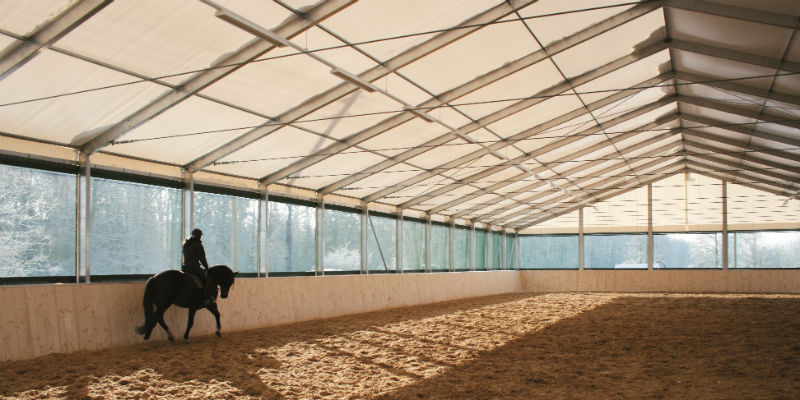Building An Indoor Colorado Riding Arena
Expanding on our article on “Building A Horse Riding Arena In Colorado” there is so much to be said on the topic of indoor Colorado riding arena. Other key facts that should be considered when constructing an indoor arena are ventilation and the base. Ventilation comes through strategically placed openings that encourage the flow of air. Also, without adequate ventilation, you can get condensation on the roof that will drip down. Mechanical ventilation systems occur more often in heated (insulated) buildings and larger commercial projects. Therefore, make sure to discuss ventilation with your contractor. Go over your options to find the best method for you.
The base is the foundation on your riding arena and a vital component of the structure. That base should consist of four inches of compacted limestone screenings over top of a clean engineerable fill. This fill could be clay, sand, or an aggregate mix that does not contain any organic matter. The footing itself can range from a locally sourced sand to a sand and fiber mix. Add a permanent dust-free coating to either of these footings. A decent footing gives stability, traction, and shock absorption for your horses. Also, depending on what kind of horses you’ll be training, your footing may need to be different.
Different sands have different qualities. A sand mixture uses grains of different sizes. Hard, washed, medium-course sands, are preferred. You will also want sand with a high angular content. Other sands break down quickly creating dust and offer little traction. These sands to not make good riding arena surfaces. Deciphering the elements of quality sand and sourcing the material can be difficult. Consult with your contractor on footing when selecting your material. Click the link for more information on arena builders in Colorado.


For every indoor arena, it is important that the horses have sufficient traction and stability. Much of the stability stems from the lower levels of the arena — particularly the base — but the footing that is too floppy can negate the base’ stability. Without sufficient traction, your horses will hesitate to take turns or make difficult movements. Or, worse, they could injure themselves. Every indoor arena needs a balance on both of these fronts.